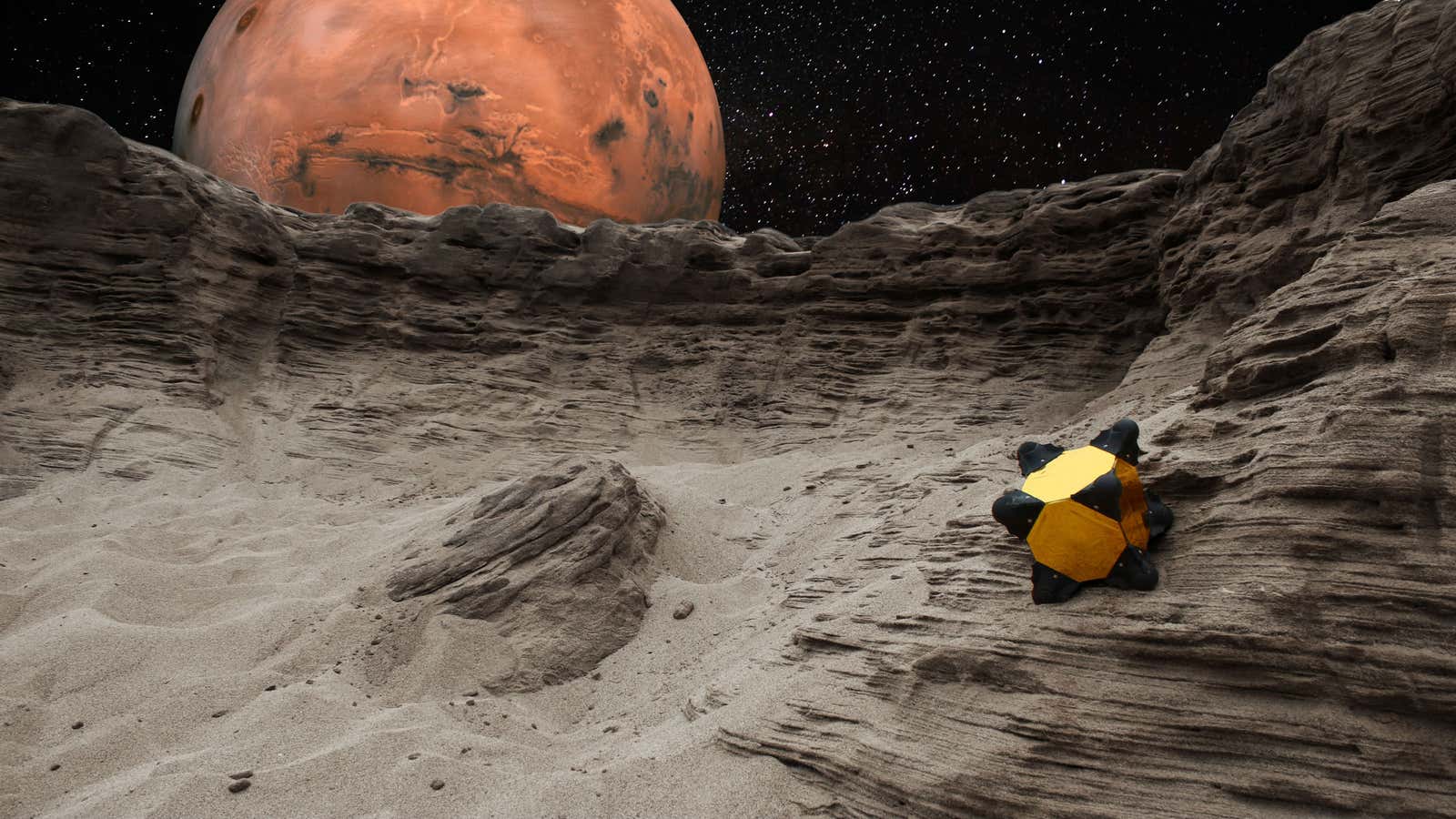Imagine an army of tumbling, twirling, gyrating robots exploring faraway icy bodies. Do they look anything like this?
That’s NASA’s Hedgehog robot, performing a “tornado” maneuver designed to escape from a deep sinkhole on a comet. The US space agency, together with Stanford and MIT, is developing a swarm of these little buggers to traverse the rocky, icy landscapes on comets and asteroids that normal probes can’t explore easily. Why? Microgravity.
The gravity on these space rocks is a fraction of what it is here on Earth. According to NASA, a person of average weight would weigh as little as a paperclip on a comet. That means that normal space rovers, like Mars Curiosity, would not be able to generate traction on a comet, and would likely end up flipping over if it tried moving:
Enter the Hedgehog, which is essentially just a small, sturdy cube with spikes on each edge. No wheels needed. ”Hedgehog is a different kind of robot that would hop and tumble on the surface instead of rolling on wheels,” said Issa Nesnas, head of the Hedgehog team at NASA’s Jet Propulsion Laboratory. “It is shaped like a cube and can operate no matter which side it lands on.”
NASA and Stanford both tested Hedgehog prototypes aboard a C-9 aircraft (which NASA uses to research microgravity), and found that the robots work indeed well in reduced gravity environments. NASA’s prototype weighs about 11 pounds (5 kilograms), but the agency expects it to weigh twice as much once scientific instruments are added to the inside. Both NASA’s and Stanford’s prototypes use flywheels to create the robot’s spinning motion, though the two use slightly different braking mechanisms.
According to the researchers, Hedgehog robots are cheaper to build than normal rovers. The idea is that a mothership would release several of them onto a comet or asteroid at a time, allowing them to “spread out to make discoveries on a world never traversed before.”
While we haven’t seen anything quite like this in either real life or science fiction (unless you count Sonic the Hedgehog), it does slightly resemble the Interstellar robots TARS and CASE, when they go into cartwheel mode (spoilers below):
